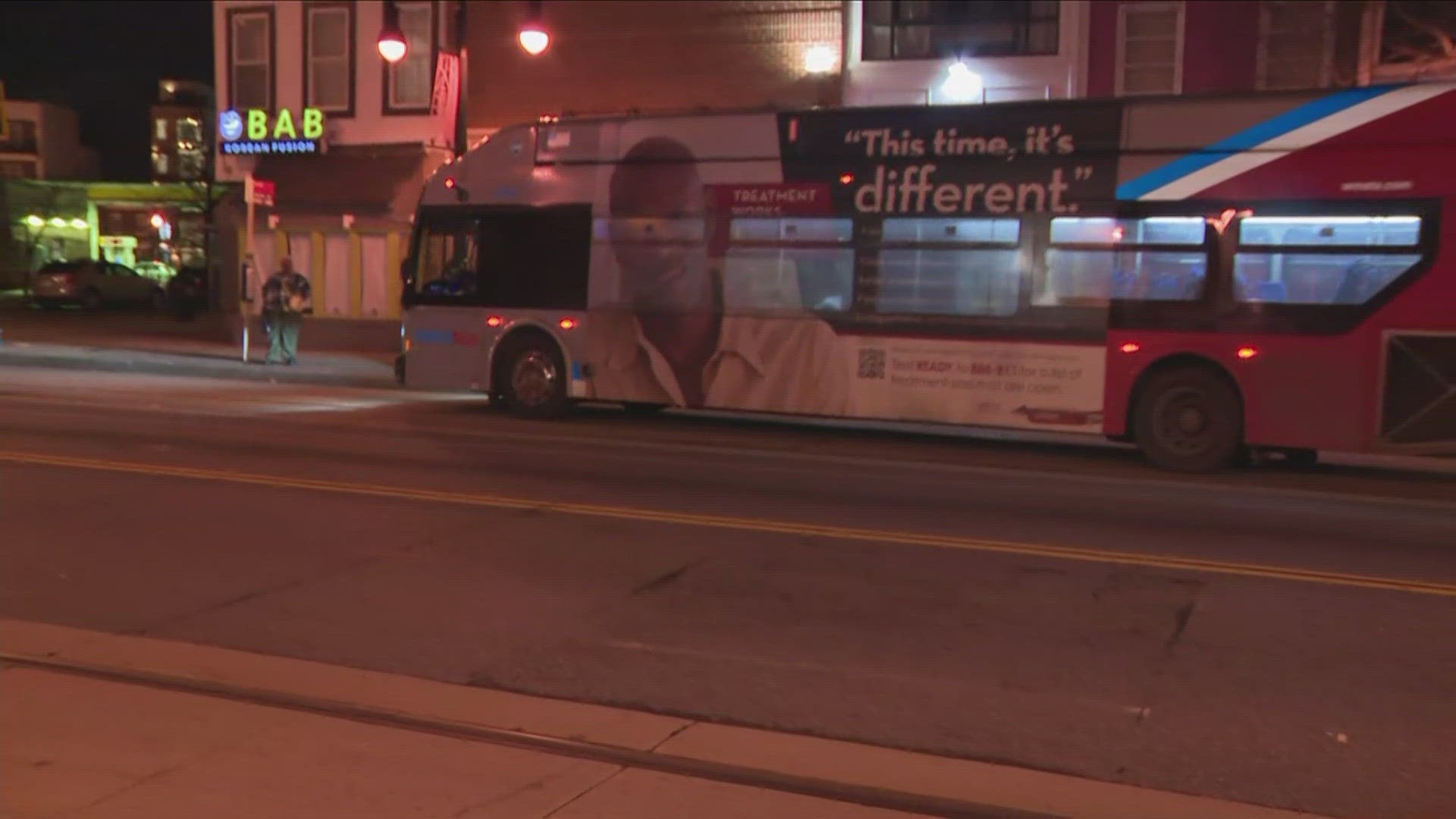WASHINGTON — Are you driving in D.C.'s bus lanes or blocking bus stops with your vehicle? The District plans to start fining you $100 starting Monday.
After two false starts in 2023, it seems like the kinks have been ironed out and the District Department of Transportation has announced a new date for Phase Two of the Clear Lanes Initiative. The program was implemented by D.C. and Washington Metropolitan Area Transit Authority (WMATA) to help keep the "bus-only" lanes clear of commercial vehicles.
The enforcement date was originally supposed to go into effect back in September 2023, which then became November and now DDOT says phase two of the program will begin on Jan. 29. Drivers illegally driving, parking, standing, or stopping in a bus lane may receive a $100 fine.
“We are excited about the start of the second phase of this program,” said Interim DDOT Director Sharon Kershbaum. “Our goal with the Clear Lanes program is to demonstrate our commitment to strengthening our transportation network and helping residents who use public transportation get across the city faster and more efficiently.”
Clear Lanes, in partnership with Metro, aims to improve bus travel times and enhance bus stop safety and accessibility by using cameras mounted on Metrobuses to identify vehicles illegally operating, parking, standing, or stopping in dedicated bus lanes and bus zones. WMATA added cameras to each Metrobus that runs along the 31 routes with bus-only lanes, totaling 140 cameras.
The cameras will take pictures of cars parked, stopped or driving in the bus-only lane and record videos of the license plates. Drivers who violate the new traffic law will be fined $100 for being parked or stopped in a bus zone or for driving in a bus lane. The money collected from the fines will go towards the D.C. general fund.
RELATED: WMATA to crack down on cars in bus lanes with cameras on Metrobuses as part of larger overhaul
It is important to note that not all vehicles are restricted from using the bus lanes. Some authorized vehicles include:
Public transit buses, tour buses, school buses, and streetcars;
Bikes, e-bikes, and scooters;
Maintenance vehicles (DC or Metro vehicles that are actively making repairs);
Emergency vehicles (while responding to an emergency); and
Accessible transportation service vehicles (wheelchair-accessible vehicles registered with the Washington Metropolitan Area Transit Commission that are actively transporting someone with a disability).

